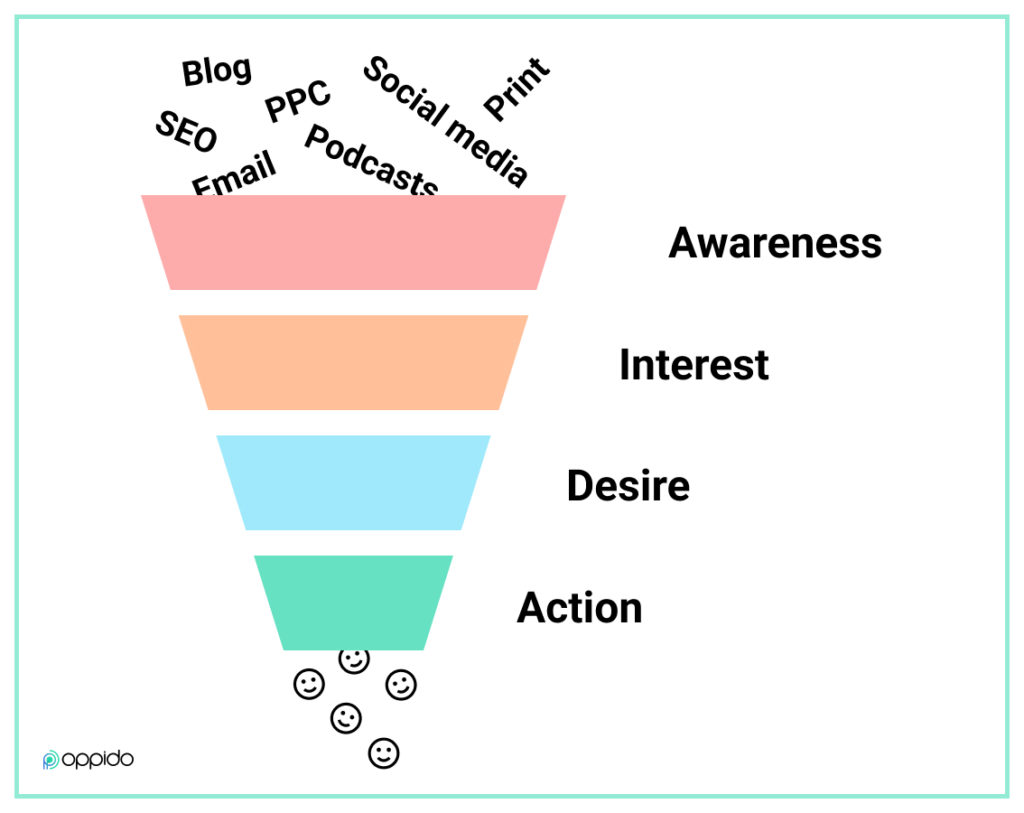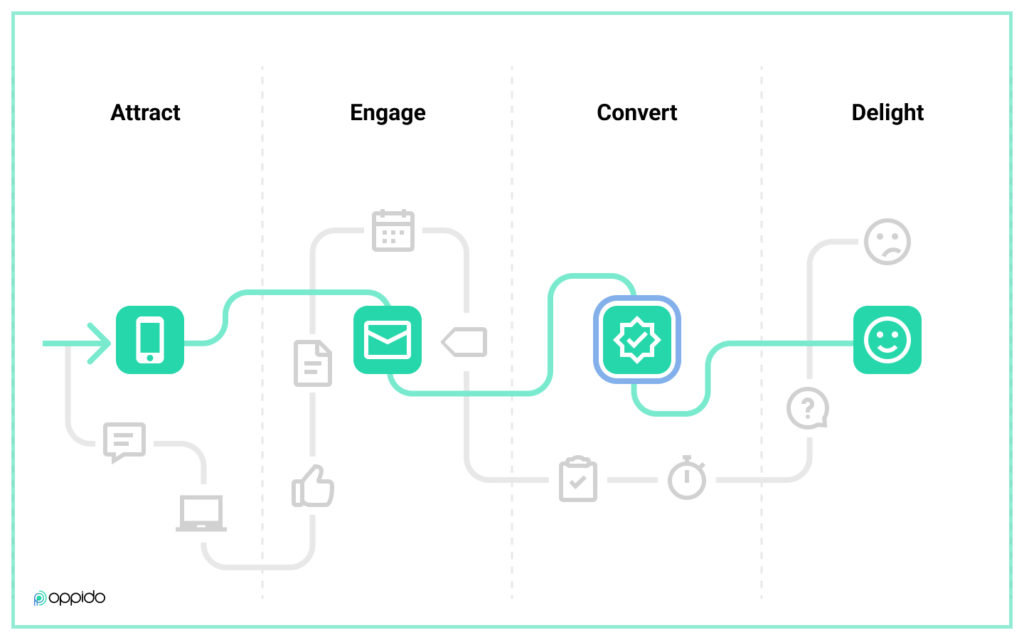One of the critical responsibilities of strategic marketing directors is to create effective, understandable long-term communication plans. A prerequisite to this is truly understanding your target audience – a topic we’ve focused on in our previous articles here and here. The next step in this process is to develop a storyline, the funnel, of marketing assets that will help your target audience understand the added value of your product or service.
The Advantages of Communication Planning
There are several good reasons why communication planning is essential:
- Communication planning gives you a framework for prioritizing your ideas. Likewise, if you don’t have enough ideas to work with, communication planning can help you and your team spark those creative juices.
- Communication planning creates a symbiotic relationship between your assets. You create a storyline that is contributed to by individual assets. Your customers can freely explore them, going into more and more detail each time, without feeling pressured.
- Communication planning helps you visualize your status-quo and potential problem areas on which you need to focus.
Communication Planning Stakeholders
Effective long-term communication plans are always a collaborative effort within the marketing team and across the entire organization.
🤝 Inputs into the planning process must come from all the company’s departments: The CEO’s vision, product pipeline, competitive analysis, sales pitch deck, HR company values are just some of the crucial information. Nothing’s worse than a communication strategy misaligned with the business strategy.
🚁 The helicopter view by the CMO/Head of Marketing is another crucial aspect. As the only person in the company with a detailed understanding of all the other departments and marketing principles, the CMO needs to essentially create a brief on which their marketing team can work. They collaborate all the data mentioned above into one information byte for their team and ensure they are always synchronized.
📈 Brainstorming within individual marketing teams – SEO, Google Analytics, Community Marketing, Event Marketing, Product Marketing? They all provide key detailed information from their respective marketing fields that prioritize, de-prioritize, or expand individual assets.
🗓️ Detailed planning by the Content Marketing team: At the end of the day, the content marketing team puts all of these inputs together. It creates a specific communication timeline with individual assets, their descriptions, and project plans to build them.
What Falls Within a Communication Plan?
Simply said, any form of mass communication towards your target audience. Examples can include blog posts, white papers, podcasts, videos, landing pages, email newsletters. These assets can then be used by online marketing, performance marketing, community marketing to drive traffic to your website, maintain engagement and generate leads/purchases.
Key Frameworks to Keep in Mind When Planning Communications
Marketing Funnel

Sometimes referred to also as See-Think-Do-Care. This framework essentially helps you group your assets and communication into several groups, from attracting attention from people who’ve never heard of your brand down to maintaining relationships with existing customers.
Marketing Channels

Sometimes referred to as Paid, Earned, Owned, Shared. This framework helps you understand how your individual assets may be used most effectively. Sometimes the delivery method drives the content.
Customer Journey

In marketing, you want your customers to take a predefined set of steps. Essentially you want them to explore a storyline you’ve prepared for them. Customer journey helps you visualize what this storyline is and how new assets alter/expand this mini-universe you’ve created.
Putting It All Together – Visualize, Visualize, Visualize
Communication planning is a long-term process, not a one-time project. Rarely do companies start with no content. So, you need to visualize your status-quo, identify problem areas and figure out project plans to mitigate those problem areas. As such, your content team should have two documents constantly updated:
- Status-quo customer journey highlighting the ‘ideal customer journey’ at the current moment—highlighting marketing funnel stages, channels and assets used.
- The marketing calendar highlighting all new assets generated in the coming weeks, including project plans, their latest place in the ‘ideal customer journey,’ and key messages to be placed in them.
To conclude, a well-thought-out communication plan can significantly impact the efficiency and efficacy of your marketing without increasing the required budget, and ad spends. It depends on many factors, the crucial one being coordination within the entire organization. Creating but mainly maintaining a well-defined communication plan is an advanced marketing feat, one of which only accomplished strategic marketers are capable.
As with many other marketing activities, Oppido can help you with communication planning as well. Write to us at info@oppido.com, follow us on social networks and visit our blog in the future for more articles on this topic.
Further reading:
